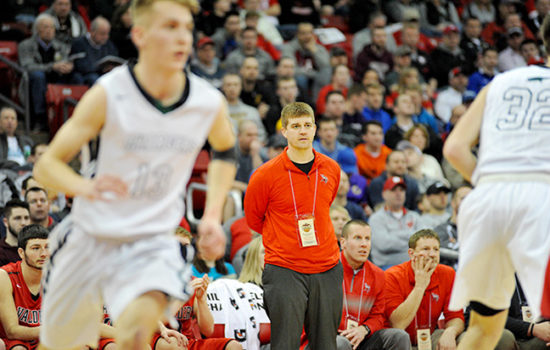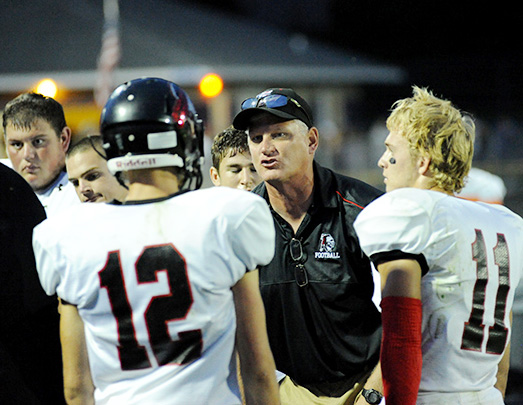Retaining successful coaches
How athletic directors can encourage their best team leaders to stick around

There are many building blocks used to create a successful athletic program. But each program is different, so not all blocks look and feel the same.
If there is one common thread to any successful athletic program, it’s the quality of the coaching staff. Coaches are the lifeblood of what makes a program thrive. They are on the front lines. In a people business, they are ones most closely linked to the clientele because they are the ones actually teaching the fundamentals, developing the game plans, fostering the relationships, educating for character, administering the paperwork and handling the parents.If the coaches perform at a high level, then your program will maximize its potential. Your program is only as good as the coaches who help run it, so your attraction, procurement and retention of the highest quality individuals are of the utmost importance.
Though hiring high quality coaches can be seen as a challenge, retaining them over a long period of time is an even taller task. Over time, more and more challenges have been piled on to a coach’s job description. Their day-to-day responsibilities and professional requirements have become ever increasing; their “seasons” have become close to, if not fully, year-round; and parental and community expectations and scrutiny have bubbled to a fever pitch.
Compounded with forces working against them, such as limited program funding and competition from outside organizations, what was once intended to be a part-time job has now become every bit of a full-time endeavor. More and more coaches take a long, hard look in the mirror to evaluate whether this “supplemental” position fits into their lives, especially considering many are balancing a teaching assignment, family obligations and other outside interests.
Since we know coaches are our most valuable commodities, the athletic administrator has to be incredibly mindful of methods to retain them over time. The most important question that I ask myself is, “If I were a coach considering leaving the profession, what would keep me coming back?”
Of course, there are obvious reasons why some coaches stay, and they are usually identical to the reasons why they entered the profession to begin with: The love of the sport, and the satisfaction they get through their relationships with their athletes. Yet, for some coaches, the downsides outweigh the upsides, ultimately moving them toward the exit.
Through the years, I have been fortunate enough to retain a hard working, talented and dedicated core of coaches. Sixty-five percent of the coaching staff has been with me for five years or longer. Most of the success of our program can be attributed to their loyalty, longevity and consistently high performance.
 Here are a few strategies that I feel have been helpful in keeping them involved and retained.
Here are a few strategies that I feel have been helpful in keeping them involved and retained.
1. Build strong relationships.
One of the ways you can achieve this is through frequent informal meetings. Coaches who manage teams with low participation numbers — tennis, golf, baseball — generally have little-to-no help from assistant coaches. In these cases, they may be devoid of a support system of adults.
Little-to-no daily dialogue with another adult close to his or her team to process issues and talking points can make the coach feel like they’re on an island. There is nothing lonelier than walking off the field all by yourself past an entire parent group after a tough loss.
It’s important for coaches to know that they have a support system, especially with their direct supervisor as a part of it. A good way to stay connected with coaches so they feel your support is through weekly informal meetings. Find a convenient day and time each week when both of you are available for a casual “drop-in meeting” where you can ask questions, share observations, offer praise, discuss struggles, help talk through problems and, most importantly, listen.
These meetings can be held during a plan period, lunch or on the phone. By building bonds though these informal meetings, coaches understand that your relationship is not about “you and me,” but more about “we.” Having that built-in support system can make the coaches’ overall experience better, and it may keep them around longer.
2. Embrace a greater purpose.
Everyone likes to be a part of a winning team. Building your program as if it were a team working toward a common goal helps all members of the staff feel like they are a successful part of the bigger program, regardless of wins.
Interscholastic athletics are a platform for coaches to teach life lessons through sport. Emphasize this idea by creating an athletic department mission statement that encompasses player safety, character development, academic success, life lessons and leadership skills. Implement programs that support coaches in materializing these outcomes.
When the department goals are clearly focused on educational athletics, it provides coaches with an environment of great purpose beyond wins and losses. Sometimes this can be the difference between them staying and going.
3. Don’t micromanage.
For most coaches, their team is one of the only domains that they have exclusive control over. The sooner the athletic director understands and respects this, the more comfortable the coach feels to do the job to the best of his or her ability.
 This requires a higher amount of front-end work from the athletic director to carefully attract, vet and hire a coach you feel has the skills to do the job required. It also requires your relinquishment of control to understand that, though the coach may do things in a different way, it doesn’t necessarily mean it’s the wrong way.
This requires a higher amount of front-end work from the athletic director to carefully attract, vet and hire a coach you feel has the skills to do the job required. It also requires your relinquishment of control to understand that, though the coach may do things in a different way, it doesn’t necessarily mean it’s the wrong way.
Allow coaches to run their program the way they would like to run it, as long as it fits within the framework of the overall department vision, policies and procedures. They appreciate your professional respect, and this may be another reason for them to continue to rule their domain in your program.
4. Alleviate the workload.
Though your to-do list may be endless, you’re not alone.
Coaches often have an unmanageable task list that can only be done when they are available. Athletic directors need to remember that our daily schedules, though perhaps more busy, may be less bound by required time blocks such as professional meetings, teaching class or coaching practices. Therefore, for some coaches, the best way you can support them is by using some of your non-restricted time to make their day-to-day task list shorter.
There are multiple ways you can do this. One way is to create efficient systems that minimize extra work for the coaches. For example, create and manage a gym or field schedule so the coaches don’t have to spend their time haggling with other coaches for space-time slots. Another idea is to centralize your student-athlete paperwork. Rather than each coach managing their own database of physical forms, you can collect paperwork and create a database that all coaches can access.
Facilitating practice and game set-up through a third party — student managers or custodial staff — also can greatly reduce the coaches’ daily stress, opening up time they can spend working with student-athletes, rather than being bogged down by a mounting list of peripheral items. More time spent doing the things they love increases a coaches’ longevity.
5. Implement an appreciation program.
Find ways to show your coaches, personally and publicly, that you appreciate them. Many coaches are not in the profession for the attention and the praise, but it certainly helps them feel satisfied when they know that their tireless efforts are recognized.
I created a coaches’ appreciation program. After five years of service, I have a plaque made for the coach with a candid photo of him or her in action. I also do this at 10 and 20 years. I present the plaque to the coach at the preseason parents meeting, along with a speech praising their work and commitment to our program.
It’s also a good idea to create a revenue stream exclusively for discretionary items for coaches such as polo shirts, sweatshirts and jackets. Since many coaches may not feel the appreciation from all stakeholders, constant appreciation from the athletic director may be enough to keep them coming back.
I would be lying if I said there aren’t particular coaching positions that are a revolving door for all athletic directors. Every administrator has their cross to bear in terms of particular sports that are always difficult to fill with effective coaches, meaning those sports struggle to find consistency for the program. Yet, many times, that is because of factors outside our control.
In spite of that, athletic directors need to understand and appreciate the idea that quality coaches are the catalyst of program success, and employing strategies to retain them will keep their programs strong well into the future.
Jay Schwanke, CAA, is the athletic administrator at Dublin Sells Middle School in Ohio.





